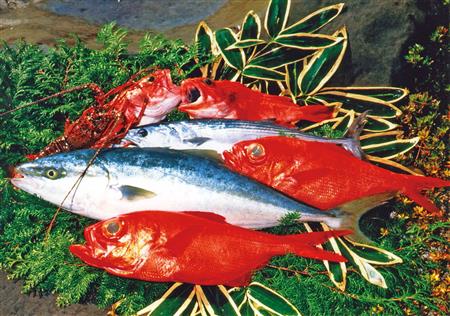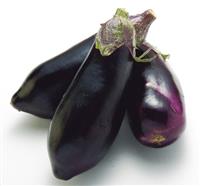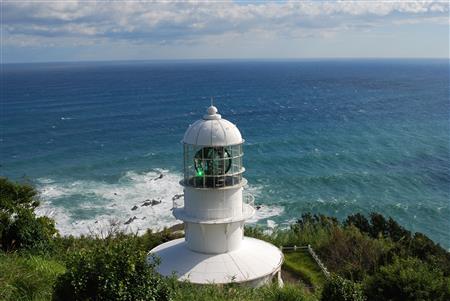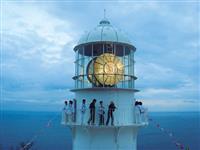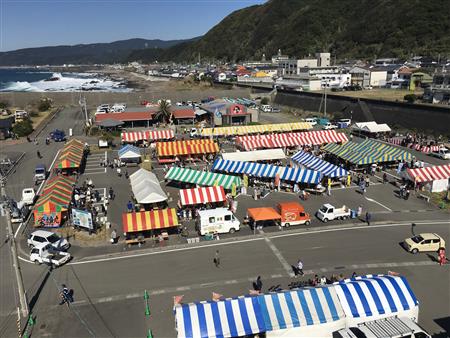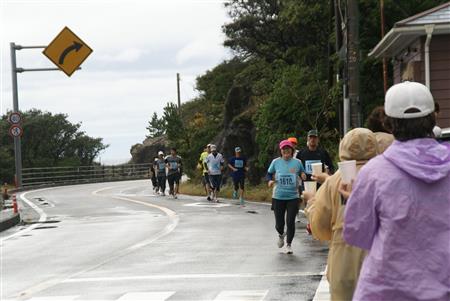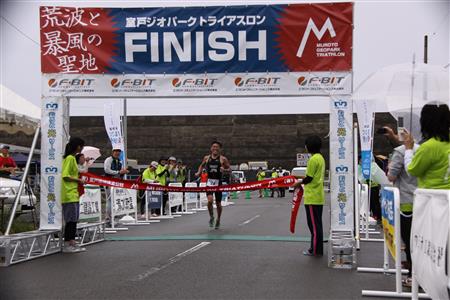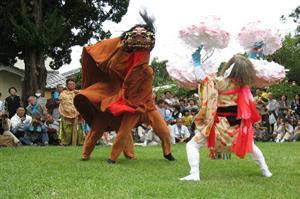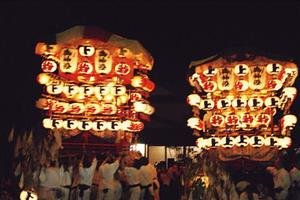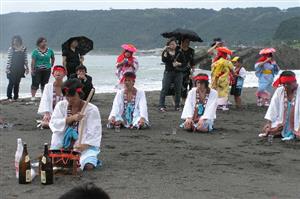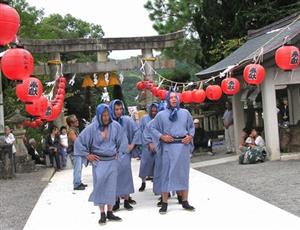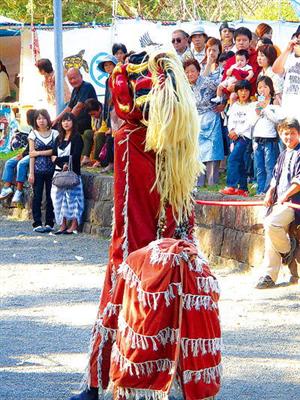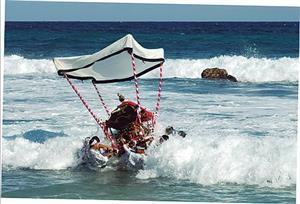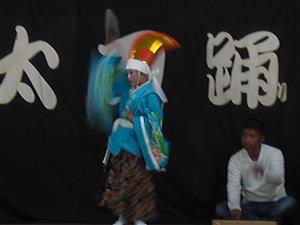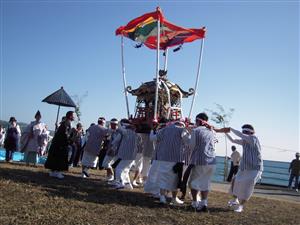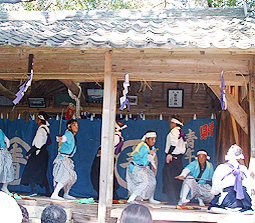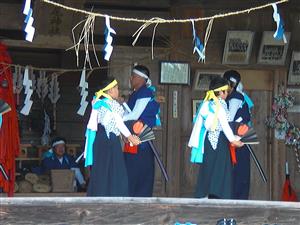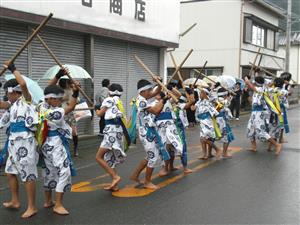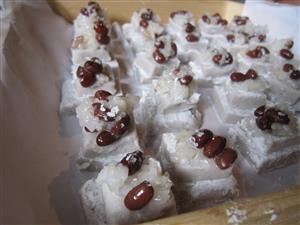Autumn
September to November
Muroto's many fishing grounds provide a wide variety of fish. Autumn is the best time to try Japanese spiny lobsters and mackerel tuna.
Striped bonito is delicious this time of year.
This fish is very delicate and goes bad easily, so it cannot be sent far away.
Why not try fresh striped bonito here in Muroto?
Vegetables such as eggplant also come into season.
Muroto has a long history, and many of its traditional festivals are continued to this day. When autumn comes, Shinto festivals, called jinsai, are held throughout the city.
Cape Muroto Lighthouse Festival
The only day during the year the lighthouse is open to the public.
This white lighthouse stands in contrast with the blue sky and sea. It has been a landmark for navigators traveling the coast of Muroto since it was first lit in 1899.
The lens is 2.6 meters in diameter, one of the largest in Japan, and can light a distance of up to 49 kilometers. The second-oldest lighthouse in Japan, it is famous for its long history. During the Lighthouse Festival held every fall, the lighthouse’s closed-off interior is opened to the public.
Muroto Marugoto Sangyo Matsuri (Local Industries Festival)
Let's enjoy the food of Muroto!
Get to know all of Muroto, with a festival showcasing food, crafts, yosakoi dancing, local band performances, preschooler's dances, and more!
Cape Muroto Health Marathon
Run through the Muroto UNESCO Global Geopark
Run along the coast of Cape Muroto, and enjoy the breathtaking scenery along the way.
With a 5-kilometer, 10-kilometer, and half-marathon-course, this event is enjoyed by both beginners and experienced runners.
Muroto Geopark Triathlon
Prepare for a real challenge.
The Muroto Geopark Triathlon is usually held in September.
This triathlon consists of 1.5 kilometers of swimming, 40 kilometers of cycling, and 10 kilometers of running, along some of the toughest courses in Muroto. Participants can register alone or in teams of three.

